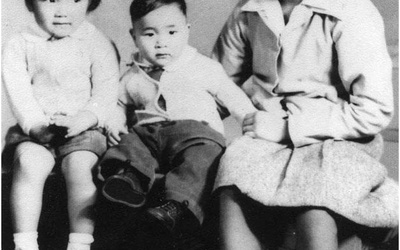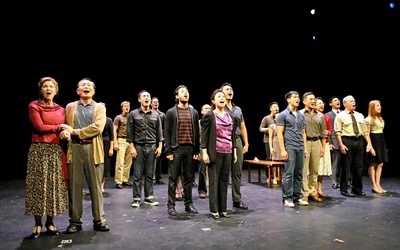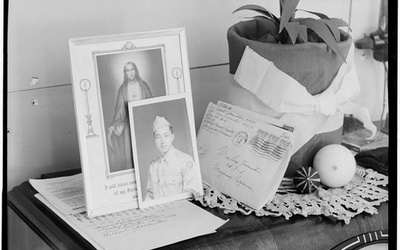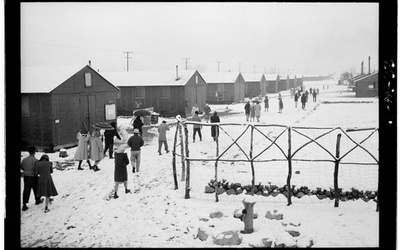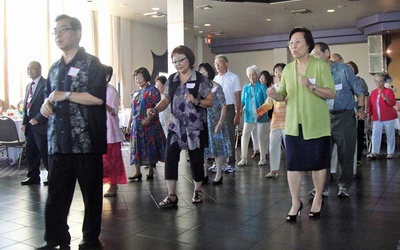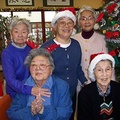
ナンシー・マツモトは、アグロエコロジー(生態学的農業)、飲食、アート、日本文化や日系米国文化を専門とするフリーランスライター・編集者。『ウォール・ストリート・ジャーナル』、『タイム』、『ピープル』、『グローブ・アンド・メール』、NPR(米国公共ラジオ放送)のブログ『ザ・ソルト』、『TheAtlantic.com』、Denshoによるオンライン『Encyclopedia of the Japanese American Incarceration』などに寄稿している。2022年5月に著書『Exploring the World of Japanese Craft Sake: Rice, Water, Earth』が刊行された。祖母の短歌集の英訳版、『By the Shore of Lake Michigan』がUCLAのアジア系アメリカ研究出版から刊行予定。ツイッター・インスタグラム: @nancymatsumoto
(2022年8月 更新)
この執筆者によるストーリー
Documenting Manzanar - Part 16 of 18 (Toyo Miyatake)
2011年10月10日 • ナンシー・マツモト
Read Part 15 >>The Post-War Years: Coming to Terms with ManzanarOf course once freed from the concentration camps, the Japanese did congregate in clusters, many settling not far from the Los Angeles Little Tokyo they had inhabited before the war. Decades of pre-war racial prejudice followed by the mass illegal roundup and imprisonment had encouraged a clannishness, as well as complicated feelings of discomfort, shame and anger in relation to non-Japanese. Patrick Nagatani’s account of the 1977 UCLA photography show he …
Documenting Manzanar - Part 15 of 18 (Toyo Miyatake)
2011年10月3日 • ナンシー・マツモト
Read Part 14 >>In Moving Images: Photography and the Japanese American Incarceration (University of Illinois Press, 2009), Jasmine Alinder described how the U.S. military and government used photography as a tool of power and control over Japanese Americans during World War II: The struggle over photography figured in nearly every aspect of the incarceration. The military criminalized Japanese Americans through identity photographs and prohibited cameras in the concentration camps. After the attack on Pearl Harbor, the FBI began conducting raids …
Documenting Manzanar - Part 14 of 18 (Toyo Miyatake)
2011年9月26日 • ナンシー・マツモト
Read Part 13 >>Back to Japan, 1933-1936When Miyatake’s father fell ill in Japan in 1933, Toyo was selected to represent the family and returned to Japan to pay his respects. By the time he and his family had completed the two-week passage, however, Toyo’s father had died. As the de facto head of the family (his older brother, who traditionally would have filled this role, was in Los Angeles running the confectionary shop), Miyatake felt bound to stay on in …
A new musical set in Heart Mountain, an indy film featuring Manzanar
2011年9月22日 • ナンシー・マツモト
Last week, I attended a workshop production of a musical called Allegiance, which tells the tale of the unconstitutional imprisonment of 120,000 West Coast residents of Japanese descent during World War II. The show is being developed by the Old Globe in San Diego, with music and lyrics by composer/producer Jay Kuo and book by Kuo and Lorenzo Thione. Having looked at popular depictions of this sad chapter of American history in the decades since World War II, I was …
Documenting Manzanar - Part 13 of 18 (Toyo Miyatake)
2011年9月19日 • ナンシー・マツモト
Read Part 12 >>While Lange and Adams photographed Manzanar from the outside, Toyo Miyatake was the ultimate insider. Imprisoned at Manzanar almost from its opening to its closure, from 1942 to 1945, Miyatake witnessed and photographed, at first surreptitiously, then with official permission, a much broader range of scenes and activities than Adams and Lange. One of the most powerful and well-known of the 1,500 photographs Miyatake took of the concentration camp and its residents depicts three boys appearing to …
Documenting Manzanar - Part 12 of 18 (Dorothea Lange)
2011年9月12日 • ナンシー・マツモト
Read Part 11 >>“Everything Is Propaganda”Lange’s outlook on life informed the pictures she took at Manzanar. Where Adams saw the rugged natural setting as spirit-lifting and awe-inspiring, Lange saw it as brutal and oppressive. Where Adams saw opportunity and triumph of spirit at Manzanar, Lange saw suffering and a gross breach of civil rights. Because most of her photos of the Japanese American evacuation and imprisonment were suppressed, and perhaps because American citizens were not ready for their message, it …
Documenting Manzanar - Part 11 of 18 (Dorothea Lange)
2011年9月5日 • ナンシー・マツモト
Read Part 10 >> Part Two: Dorothea Lange When Lange arrived at Manzanar in 1942 to take photos for the WRA, she was already famous for her 1930s documentary photos of the rural poor, part of her work for the Farm Security Administration (FSA). Her best known work, the bleakly beautiful Migrant Mother , a portrait of a seasonal farm worker and her two children, captured the weariness and desperation of rural America and became the iconic image of the …
Documenting Manzanar - Part 10 of 18 (Ansel Adams)
2011年8月29日 • ナンシー・マツモト
Read Part 9 >> It was not until I looked at an online version of the 1944 Born Free and Equal (http://memory.loc.gov/ammem/collections/anseladams/ ) that I felt the full impact of Adams’s message. This original version includes several landscapes omitted from a 2002 reprint (Spotted Dog Press, Inc., Bishop, CA), including his majestic Winter Sunrise, The Sierra Nevada, from Lone Pine California 1944 and Mount Williamson, Sierra Nevada, from Manzanar, California (see Part 6 for more on why these were omitted). Adams included …
Documenting Manzanar - Part 9 of 18 (Ansel Adams)
2011年8月22日 • ナンシー・マツモト
Read Part 8 >> Walking a Fine Line In Born Free and Equal, Adams struggled to walk a fine line between advocating for the imprisoned Japanese while not leaving himself vulnerable to charges of disloyalty. The Nisei, too, walked that line, balancing hurt and anger with a desire for approval from the country where most of them had been born. Born Free and Equal opens with a quote from the 14th Amendment of the Constitution guaranteeing all citizens of the …
Partying Like a Nikkei Widow or Widower - Part 2
2011年8月19日 • ナンシー・マツモト
Read Part 1 >>As musical director Harry Inao cued up a recording of Dave Brubeck’s “Take Five” (“Background music provided by NWG**” as the program described it) the noise level in the room rose and our main courses of baked Atlantic salmon with hollandaise sauce and prime rib were placed before us. Itamura, who ordered the salmon, remarked, “I could use some shoyu with this, and some oroshi.” The discussion turned to the two Obon Festivals going on that weekend. …


